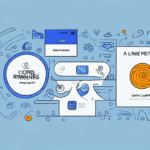7 Effective Customer Retention Activities to Increase Your Customer Loyalty
In today's competitive business landscape, focusing solely on acquiring new customers is no longer sufficient. Customer retention has emerged as a pivotal strategy for businesses aiming to thrive in the long run. Retaining existing customers not only reduces marketing costs but also leads to increased revenue and enhanced customer loyalty. This article explores seven effective customer retention activities that can help boost your customer loyalty and drive business growth.
1. Why Customer Retention is Important for Your Business
Customer retention involves keeping your existing customers engaged and encouraging them to continue doing business with you. It's a crucial strategy for sustained success in today’s competitive marketplace. According to a study by Bain & Company, retaining existing customers can be up to five times more profitable than acquiring new ones. Loyal customers are not only more likely to make repeat purchases but are also more inclined to recommend your business to others, thereby increasing brand awareness and attracting new customers through positive word-of-mouth.
Additionally, focusing on customer retention helps businesses save on marketing and advertising costs. Providing excellent customer service, personalized experiences, and loyalty rewards fosters a strong bond with customers, encouraging them to return and remain loyal to your brand. This sustainable approach builds a loyal customer base that can support your business in the long term.
2. Understanding Customer Retention vs. Customer Acquisition
Both customer retention and customer acquisition are essential for business growth, but they differ significantly in strategy and cost. Customer acquisition focuses on attracting new customers through advertising, promotions, and lead generation campaigns. On the other hand, customer retention revolves around maintaining long-term relationships with existing customers by providing value, excellent service, and personalized experiences.
While acquiring new customers is necessary for expanding your customer base and increasing revenue, retaining existing customers is often more cost-effective. According to the Forbes Business Council, increasing customer retention rates by just 5% can lead to an increase in profits of 25% to 95%. Therefore, a balanced approach that emphasizes both acquisition and retention is crucial for sustained success.
3. Key Factors Influencing Customer Loyalty
Several factors contribute to customer loyalty, including product quality, customer service, pricing, and convenience. Understanding these elements is essential for developing effective customer retention strategies.
Product Quality
Offering high-quality products or services that meet or exceed customer expectations is fundamental to fostering loyalty. Consistent quality encourages repeat business and positive reviews.
Customer Service
Exceptional customer service can significantly enhance customer satisfaction and loyalty. Prompt responses to inquiries, effective problem-solving, and personalized interactions make customers feel valued.
Pricing and Value
Competitive pricing and perceived value for money play a critical role in customer retention. Providing fair pricing and demonstrating the value of your offerings can encourage customers to stay loyal.
Convenience
Ease of access to your products or services, including user-friendly websites, efficient checkout processes, and multiple payment options, enhances customer convenience and satisfaction.
Brand Reputation
A strong and positive brand reputation builds trust and reliability, making customers more likely to remain loyal to your brand.
Personalized Experiences
Tailoring experiences to individual customer preferences and needs deepens the connection between the customer and the brand, fostering loyalty.
4. Measuring Customer Retention and Loyalty
Effectively measuring customer retention and loyalty is essential to gauge the success of your retention strategies and identify areas for improvement.
Customer Retention Rate (CRR)
CRR calculates the percentage of customers who continue to do business with you over a specific period. A higher CRR indicates better retention.
Net Promoter Score (NPS)
NPS measures customer willingness to recommend your business to others. It is a strong indicator of overall customer satisfaction and loyalty. Learn more from Net Promoter.
Customer Satisfaction Score (CSAT)
CSAT assesses how satisfied customers are with your products or services. High CSAT scores typically correlate with higher retention rates.
Customer Effort Score (CES)
CES measures the ease with which customers can interact with your business. Lower effort often leads to higher satisfaction and loyalty.
Churn Rate
Churn rate represents the percentage of customers who stop doing business with you over a specific period. Reducing churn is critical for improving retention.
5. Effective Customer Retention Strategies
Implementing targeted strategies can significantly enhance customer retention and loyalty. Below are some proven methods:
Personalized Marketing
Personalized marketing involves tailoring your messages and offers based on customer preferences and behaviors. This approach increases engagement and makes customers feel valued. Utilizing tools like HubSpot can help in creating personalized marketing campaigns.
Loyalty Programs
Loyalty programs reward customers for their repeat business with discounts, exclusive offers, or points that can be redeemed for products or services. Effective programs incentivize continued patronage and enhance customer loyalty.
Surprise and Delight Tactics
Unexpected gestures, such as personalized gifts, surprise discounts, or thank-you notes, can significantly boost customer satisfaction and loyalty.
Social Media Engagement
Active engagement on social media platforms allows businesses to build a community around their brand. Sharing valuable content, responding promptly to inquiries, and fostering interactions can strengthen customer relationships.
Exclusive Access and VIP Programs
Providing exclusive access to events, early product releases, or VIP-only benefits makes customers feel appreciated and valued, thereby increasing their loyalty.
6. Enhancing Customer Experience for Retention
Delivering a seamless and exceptional customer experience is vital for retaining customers and fostering loyalty.
User-Friendly Interfaces
Ensure that your website and mobile applications are intuitive and easy to navigate, providing a hassle-free experience for users.
Efficient Customer Support
Offering prompt and effective customer support through various channels (chat, email, phone) ensures that customer issues are resolved swiftly, enhancing their satisfaction.
Multiple Payment and Delivery Options
Providing a variety of payment methods and flexible delivery options caters to different customer preferences, making their experience more convenient.
After-Sales Support
Offering robust after-sales support, including warranties, easy returns, and ongoing customer assistance, helps maintain customer trust and loyalty.
7. Leveraging Feedback and Data for Improved Retention
Utilizing customer feedback and data analytics can provide valuable insights into customer behavior and preferences, enabling businesses to refine their retention strategies.
Collecting Customer Feedback
Gather feedback through surveys, social media, and reviews to understand customer needs and identify areas for improvement.
Data Analytics
Analyze customer data to track purchasing patterns, identify trends, and personalize interactions. Tools like Google Analytics can be instrumental in this process.
Continuous Improvement
Use the insights gained from feedback and data analysis to make proactive changes to your products, services, and customer interactions, thereby enhancing overall customer satisfaction and retention.
Conclusion
Implementing effective customer retention activities is essential for building and maintaining customer loyalty, which in turn drives business growth and profitability. By understanding the importance of customer retention, distinguishing it from acquisition, identifying key factors that influence loyalty, and employing targeted retention strategies, businesses can create a loyal customer base that supports long-term success. Additionally, enhancing the customer experience and leveraging feedback and data ensure that retention efforts are continually optimized to meet evolving customer needs. Investing in these areas not only fosters loyalty but also turns satisfied customers into brand advocates, further expanding your business through positive referrals.






















